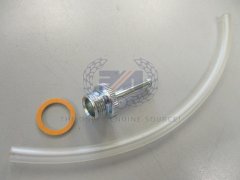- Joined
- Nov 26, 2009
- Messages
- 3,080
We've all adjusted float height by linear measurement. I did that with my carbs but I noticed that when I shut off the fuel - one side died about 20 - 30 seconds before the other.
So now I adjust the float level so they both run out of fuel at the same time (starting with same amount in fuel lines when shutting taps).
So now I adjust the float level so they both run out of fuel at the same time (starting with same amount in fuel lines when shutting taps).
Last edited:

